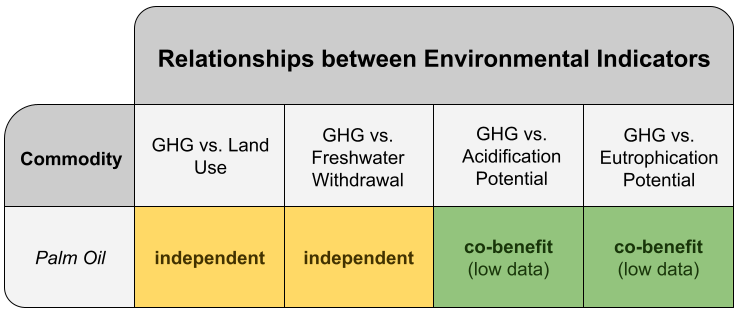
Palm oil is a form of vegetable oil that is produced from the fruit of oil palm trees. The main problem with palm oil production is that in order to grow the palm trees to harvest the oil, natural forests are being destroyed to create space for the trees. The destruction of these forests releases carbon and destroys animals’ homes. About 44 million acres of land worldwide have been used to produce palm oil, and around 60% of that land has been converted directly from natural forests. After converting the land, farming the palm trees leads to continued emissions. A leading question for our palm oil analysis is whether there are trade-offs between land conversion and other emissions, and another question is whether there are trade-offs between land use (on a plantation) and emissions.
Our study on palm oil supports the effort to prevent carbon-rich land from being converted and to limit fire use in land clearing. Our data also suggests that it is important to minimize emissions for established plantations. Trade-offs among environmental impacts for palm oil were minimal. Instead, GHG emissions are strongly related to acidification potential and eutrophication potential. Targeting one source of emissions would likely decrease other emissions as well. Land use has no correlation with GHG emissions, so land could be used more intensely to increase output and conserve land.

